Brands are using influencer marketing platforms more and more. If you go through more influencer marketing statistics, it becomes more obvious.
They see it as a way to connect with specific audiences. These partnerships help them build real trust with people who care about their products.
The Influencer Marketing industry holds a value of $240+ billion globally and is expanding at a remarkable rate of more than 30% annually.
There are many kinds of influencers. Some have small but loyal followings. Others are big-name celebrities. With their reach and followers, this gives brands different options to match their goals.
About 80% of the US companies had taken help from social media influencers for their marketing campaigns back in 2024.
Marketers need to keep up with these changes. If they understand the trends and data, they can use their budget better.
That’s why we compiled a list of the 21 most important statistics of the influencer marketing industry that brands can leverage.
Growth of the Influencer Market
Let’s kick things off with the growth of the influencer marketing industry in recent years. Things got really big over the last two years!
1. The Global Influencer Marketing Growth
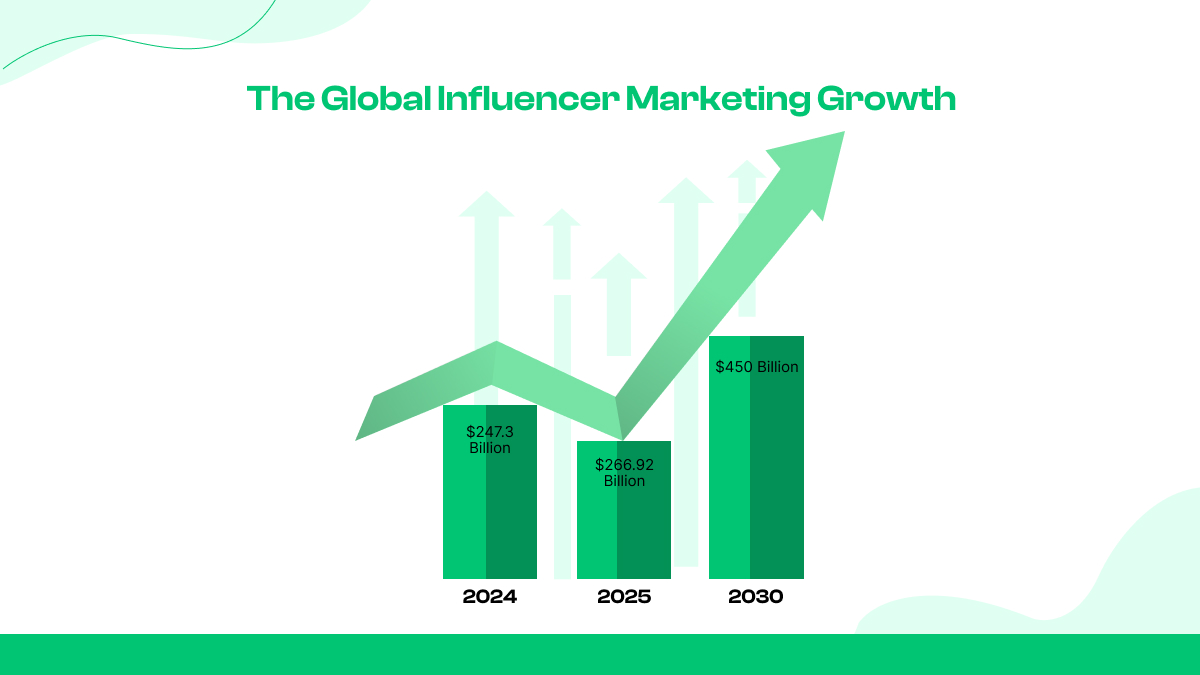
Reputable sources similarly project the market value to reach around $266.92 billion by the end of 2025, up from an estimated $247.3 billion in 2024. [Source: Influencer Marketing Hub]
Analysts expect it to grow at an average rate of about 31.4% each year from 2025 to 2030. The market could grow past $450 billion by 2030.
2. 69% of Consumers Now Rely on Influencer Recommendations for Products over Ads
Several factors are driving this growth forward. One big reason is trust.
People trust influencers more than brands.
69% of consumers say they prefer recommendations from influencers over ads. That trust helps brands turn views into sales.
3. Consumer Trust in TikTok/Instagram Keeps Growing
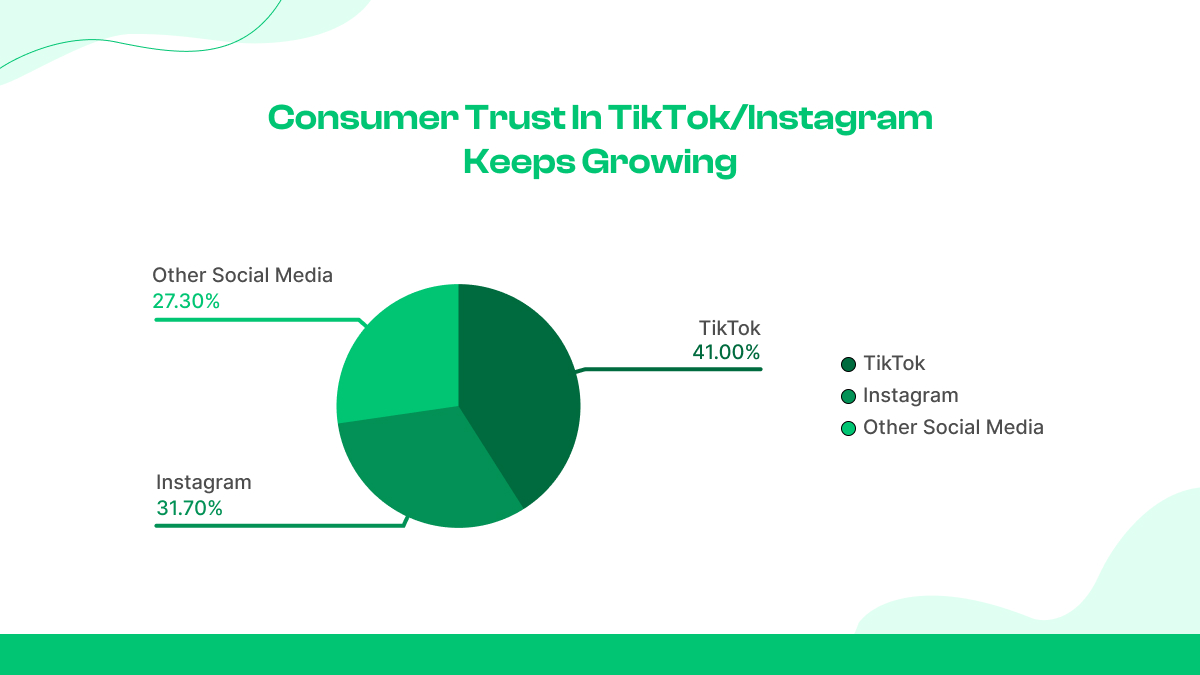
Social media platforms are growing a lot in terms of marketing segmentations.
TikTok sees an engagement rate of about 18% in the US. That’s much higher than what Instagram or YouTube gets.
In addition, 41% of consumers trust TikTok for purchases, while for Instagram, it’s 31.7%. These two platforms are the most trustworthy among all social media platforms.
4. North America Leads the Global Market
North America leads the market today with 37.45% market share.
However, the Asia-Pacific region is growing fast with a market valuation of over $24 billion.
In South America, Brazil is also becoming a key spot for content creators, accounting for 3.2% of global market share.
5. Influencers’ Gender: Over 70% of Influencers are Female
Most influencers are women. They make up around 70 to 72% of the total, with an even higher share on Instagram and TikTok, about 78%.
But the picture changes as follower counts grow. Men become more visible at the top.
On YouTube, they make up about 35% overall and often take the lead among accounts with the most subscribers.
6. Influencer Marketing by Country: India Leads the Way
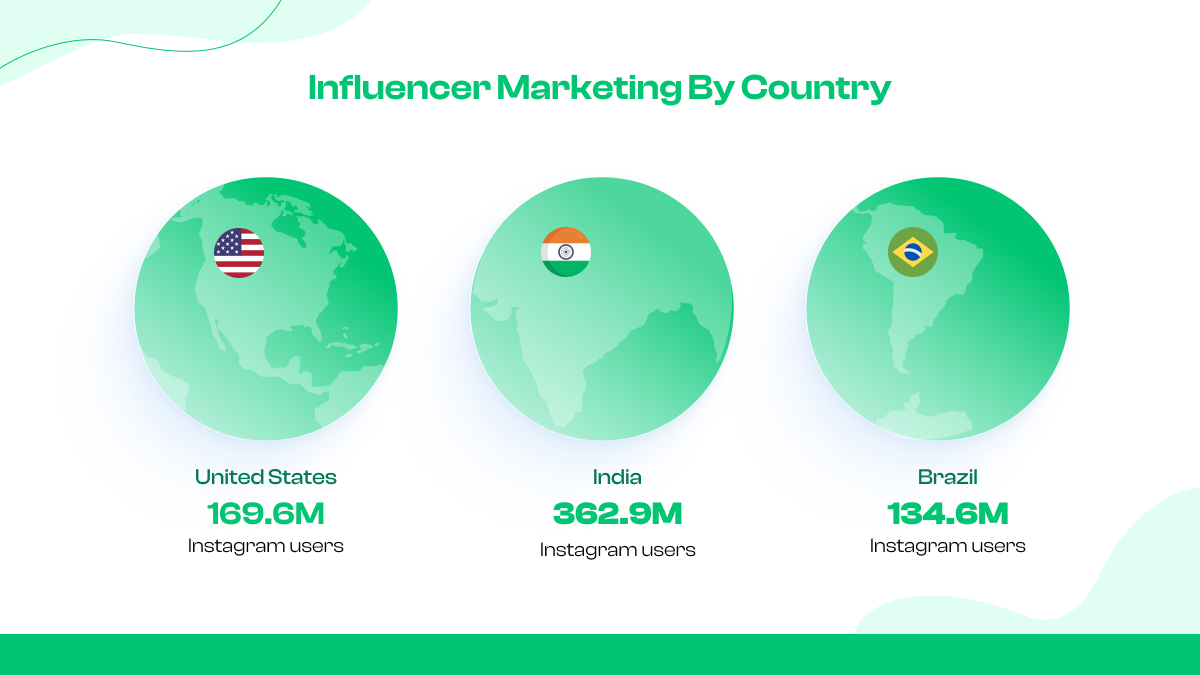
If you want to talk about influencer marketing, don't waste your time ranking countries; just look at Instagram user numbers. That’s your real indicator of market size.
India is leading the pack with a whopping 362.9 million Instagram users. Yeah, you read that right. The U.S. is trailing behind with 169.6 million, and Brazil comes in third with 134.6 million. So, if you're trying to figure out where the influencers are, it's these countries running the show.
About gender stats, in India, men dominate Instagram, making up about 67.2% of users. Meanwhile, in the U.S., women hold the slight edge at 55.4%. It's a little different everywhere, but that’s the game we’re playing. Keep up.
Top Influencer Marketing Platforms
Social media remains at the heart of influencer marketing, with an overwhelming majority of brands continuing to leverage these platforms for their campaigns.
7. Top platforms are Instagram (57%), TikTok (52%), and YouTube (37%).

When it comes to preferred platforms, Instagram retains its lead as the top choice for influencer marketing. 57% of brands select it as their first platform for campaigns.
TikTok is a close second, preferred by 52% of brands, followed by YouTube at 37%.
Facebook and LinkedIn round out the top five, preferred by 28% and 12% of brands, respectively.
However, brands are diversifying their approach by exploring up-and-coming platforms like Bluesky, Threads, Reddit, Twitch, and Pinterest to tap into new audience segments.
TikTok is the engagement leader in 2025, with influencer posts achieving average engagement rates between 2.88% and 7.50%, depending on follower count, and up to 10.3% for nano-influencers with fewer than 10,000 followers.
8. TikTok nano and micro influencers have the highest engagement rates
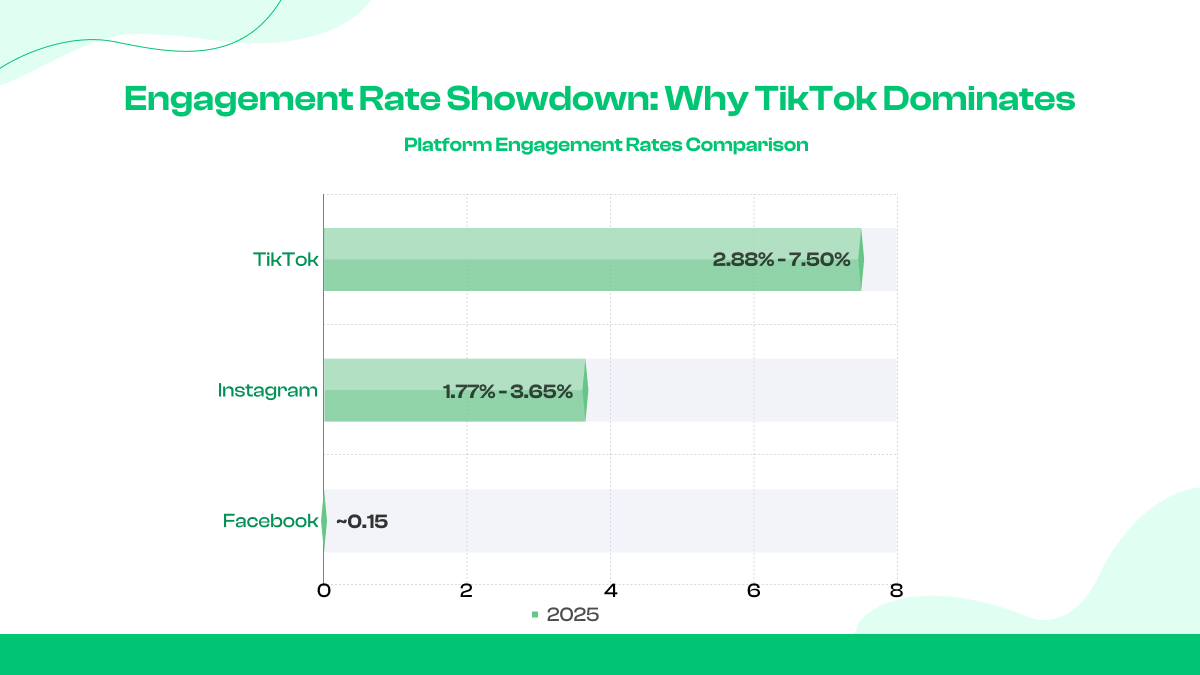
Instagram posts usually get between 1.77% and 3.65% engagement. This is higher than Facebook and X (formerly Twitter), where engagement stays around 0.15%.
Small accounts on TikTok see the most interaction. TikTok users engage more often, especially with nano and micro influencers.
On the other hand, Instagram now focuses more on reach than on actual engagement.
YouTube still reaches a large audience. It offers strong returns and supports longer, creator-led content. About 24% of marketers say YouTube gives them the best results for audience engagement.
Currently, most brands focus on Instagram and TikTok for influencer campaigns.
Some brands are also starting to test newer platforms to find different audiences.
Influencer Marketing ROI Statistics
The ROI on influencer marketing is like a cash cow that keeps on giving. And the brands? They’re eating it up because it actually works. No fluff, no magic tricks. Just results.
9. Average Roi is $5.78 per $1 spent; Top Campaigns Hit $20 ROI
Businesses earn about $5.78 for every $1 spent on influencer campaigns on average. Some top-performing campaigns are achieving up to $20 ROI per dollar invested.
This means influencer marketing often yields 11 times higher ROI compared to traditional digital ads.
It shows that influencer marketing genuinely saves money and drives action.
10. 86% of Consumers Buy at Least Once a Year, Inspired by Influencers
The effectiveness of influencer marketing is rooted in the trust consumers place in influencers.
Approximately 86% of consumers make at least one purchase per year influenced by an influencer.
Marketers measure influencer marketing success using several key metrics.
The most common metrics include:
About 80% of brands track sales generated from their influencer campaigns, while over half monitor ROI via impressions or engagement rates.
11. TikTok Short Videos Generate the Most Revenue
Short-form video content, especially on TikTok, is becoming the top driver of ROI.
71% of video marketers cited TikTok as their highest revenue-generating content format.
Marketers also focus on long-term partnerships with influencers to sustain authenticity and effectiveness over time.
12. Brands Spend About $202 Per Influencer Collaboration
Brands usually pay around $202 for each influencer collaboration currently.
More creators mean brands have more options, so the pay is getting a bit diluted.
Male influencers are cashing in 40% more than females, even though most influencers are women. Weird, right?
How much do you make as an influencer? It’s all about the platform and the size of your audience. Micro-influencers, those with 10K-100K followers, still make a solid income, especially if their followers are actually interacting with their posts.
Now, the big names with millions? They’re raking in the big bucks, no surprise there.
Influencer Type Trends - Micro and Nano Influencers Coming Forward
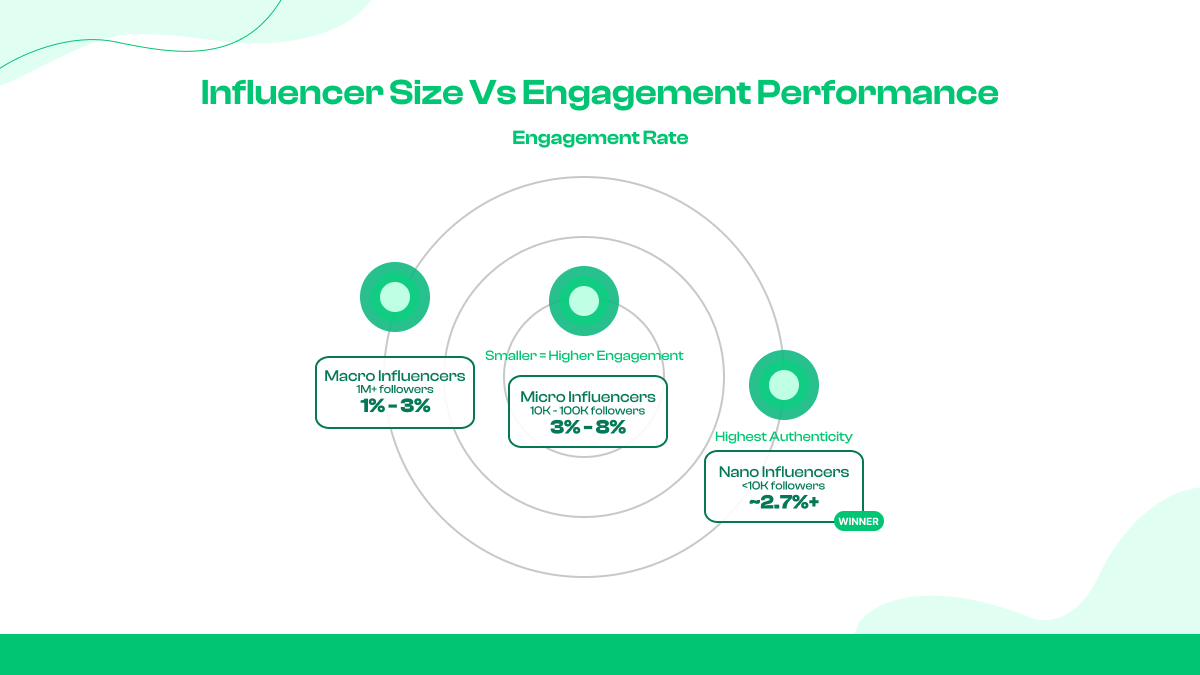
Micro-influencers get more engagement than big-name influencers. They also cost less to work with. In 2025, this pattern is easy to spot.
Micro-influencers (10k-100k Followers) Get 3%–8% Engagement, Higher Than Macro Influencers
Micro-influencers have between 10,000 and 100,000 followers.
They often get engagement rates from 3% to 8% on Instagram. In comparison, macro-influencers usually see only 1% to 3%.
Smaller influencers tend to connect more closely with their audience. They build stronger trust. Their content feels more personal and relevant to their community.
- Nano-influencers (<10k Followers) Have About 2.7% Engagement
Nano-influencers usually cost less for each interaction. They often bring in more value for the money spent. Brands use them to reach specific groups of people.
These audiences tend to trust personal and honest suggestions.
As a result, the campaign connects better without needing a big budget or a famous face.
- Micro/nano Influencers Cost Less and Give Better ROI for 56% of Marketers
Brands now prefer to work with niche influencers.
These are creators who focus on specific topics like vegan food, fitness, sustainability, or even hobbies like collecting vintage cameras. Their audiences share those interests.
As a result, the followers trust them more and engage with their content often.
The audience and influencer share the same passion, and the content feels more natural.
Brands get more clicks, higher conversions, and better results than they do with broad influencer campaigns.
Another clear shift is in the way brands run their campaigns. Many have moved away from one-time promotions.
Instead, they build long-term relationships with influencers. These ongoing partnerships help influencers talk about brands in a more genuine way.
When the message blends into regular content, people trust it more. It feels less like an ad. Over time, this approach brings better results and helps brands see a real return on investment.
Around two-thirds of brands now focus on strategies that drive conversions and rely on long-term influencer partnerships to get the best results.
Who Are the Influencers: The Demography
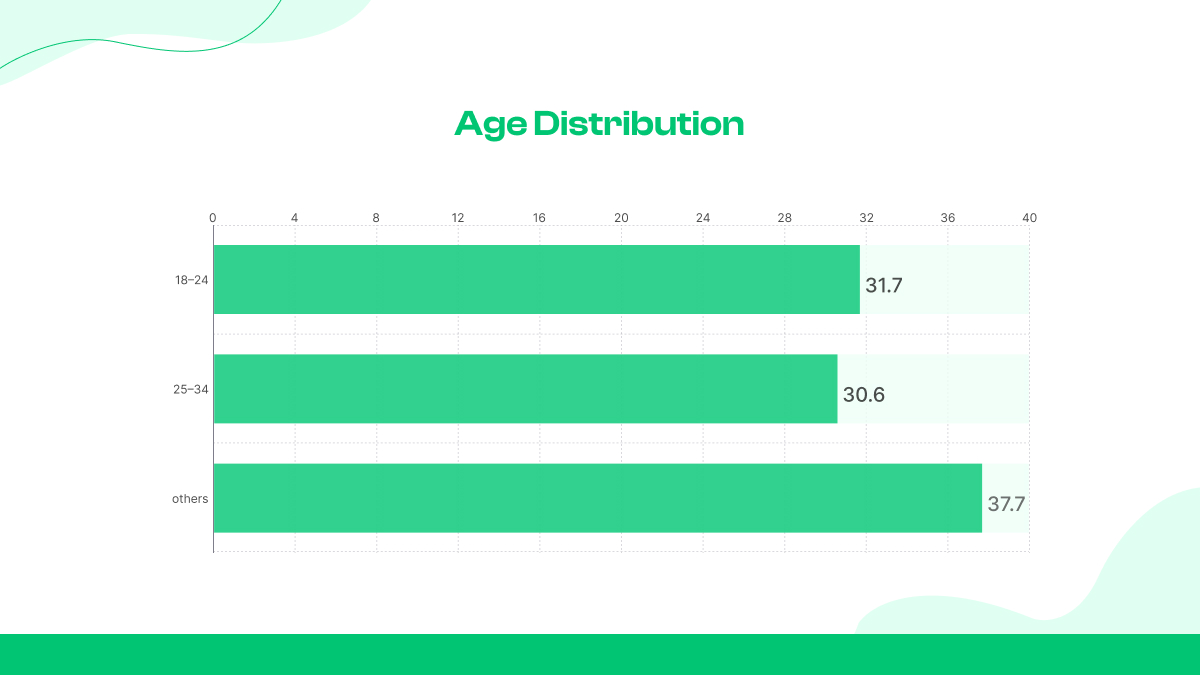
Let’s take a look at who these influencers actually are. What gender dominates, what age group they belong to, and where they are from..
17. Influencers’ Age: Mostly Aged 18-34
Most Instagram influencers and their followers are between 18 and 34 years old.
On Instagram, users aged 18 to 24 make up 31.7% of the platform.
Those aged 25 to 34 follow closely at 30.6%.
This shows that younger people drive much of the activity on Instagram.
TikTok also leans young. Most creators and users are in the 18 to 34 range.
Among them, men aged 25 to 34 form a strong group, making up 22.2% of the user base.
Influencer Marketing Insights for Brands
People still trust influencers in 2025, but it’s not always that simple.
About 61% say they believe influencers more than traditional ads. They feel the content comes from real experience, not just a sales pitch. Brands should really leverage how consumers view influencers.
18. Around 64% of Brands Use Influencer Marketing in 2025
Globally, 63.8% of brands confirm they are actively engaging in influencer partnerships this year.
This sustained high adoption reflects how deeply influencer marketing has become within overall digital strategies.
19. 74% Consumers Trust Influencers
People still trust traditional ads more than influencer content.
About 74% of consumers say they trust what influencers post to some extent. But only 5% say they trust it fully.
In comparison, around 87% of people trust traditional ads. This shows there's still a clear gap in trust.
20. 58% Bought Something From Influencer Endorsements
Consumer behavior shows a tangible impact from influencer content: 58% of consumers have made purchases due to influencer endorsements, and approximately 35% have made between four to six purchases influenced by such content.
Nearly half of consumers (49%) rely on influencer advice as a personal shopping guide, and about 49% report making monthly purchases based on influencer content. This demonstrates a strong ongoing influence on purchasing decisions.
21. 63% More Likely to Buy From a Trusted Influencer
People often buy products because influencers recommend them.
63% of shoppers say they’re more likely to purchase if a trusted influencer suggests it.
This happens because influencers feel more real and relatable than traditional ads. Micro and niche creators often build stronger trust since they stay close to their audience.
When brands work with influencers for a long time, that trust grows. Their promotions feel more natural, and the message sticks better.
As a result, brands get more value from their marketing and see stronger customer loyalty.
22. Micro-influencers Convert 20% Better and Cost 40% Less Per Engagement, With 5–10× ROI
Micro-influencers provide brands with 5- 10x more ROI, while costing 40% less. They are also 20% more likely to convert, as they operate in certain niches.
Brands are increasingly more interested in collaborating with micro-influencers. While big influencers with millions of followers are still popular choices for brand endorsements, they often don’t yield high ROI.
Creator rates keep going up, and many campaigns go over budget. To handle this, brands are working with smaller influencers who speak to a specific audience.
The Data Shows One Thing Clearly: Trust Drives Results.
People buy from people they relate to. And when the content feels real, they listen.
Brands that adapt, stay honest, and focus on long-term partnerships will keep winning.
The rest? They’ll get lost in the scroll.
The brands that win aren’t the ones with the biggest budgets.
They’re the ones who master trust-driven influencer campaigns before everyone else catches up.
Frequently Asked Questions
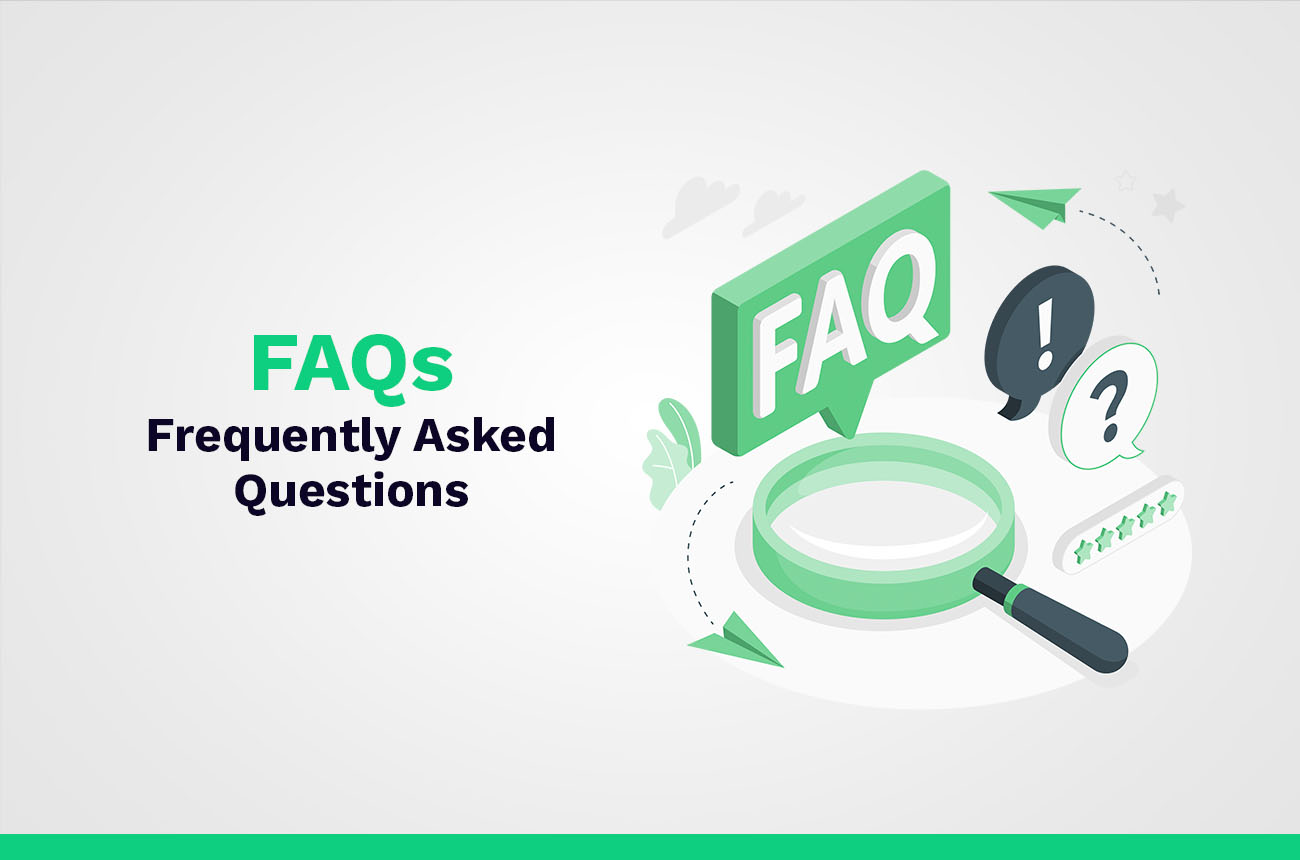







.svg)
.svg)



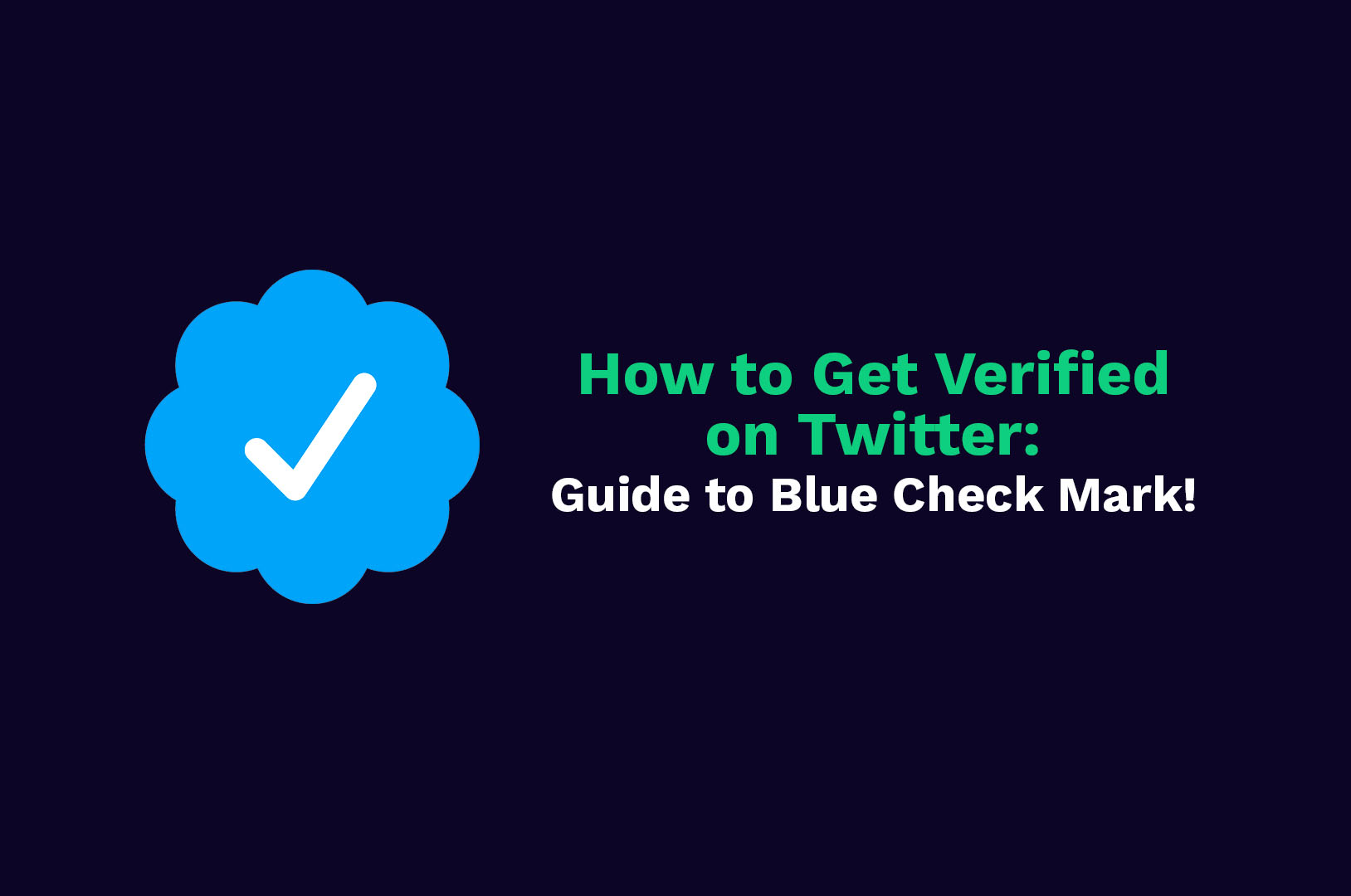



0 Comments
Great tips! I never realized how much engagement impacts growth more than just posting frequently. I've been focusing only on content, but now I see how interacting with my audience can make a difference. Time to step up my strategy!
Super helpful article! I always thought Facebook Groups were just for discussions and never really considered them as a tool for growing followers. The idea of actively engaging and sharing valuable content in relevant groups makes so much sense. I'll definitely start participating more and see how it impacts my page. Thanks for the great advice!